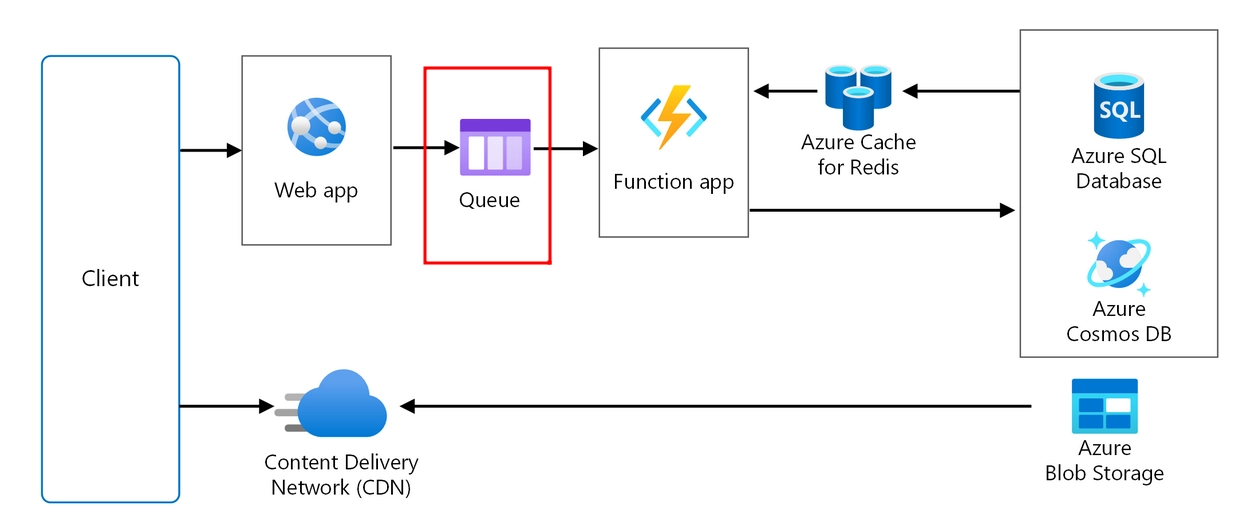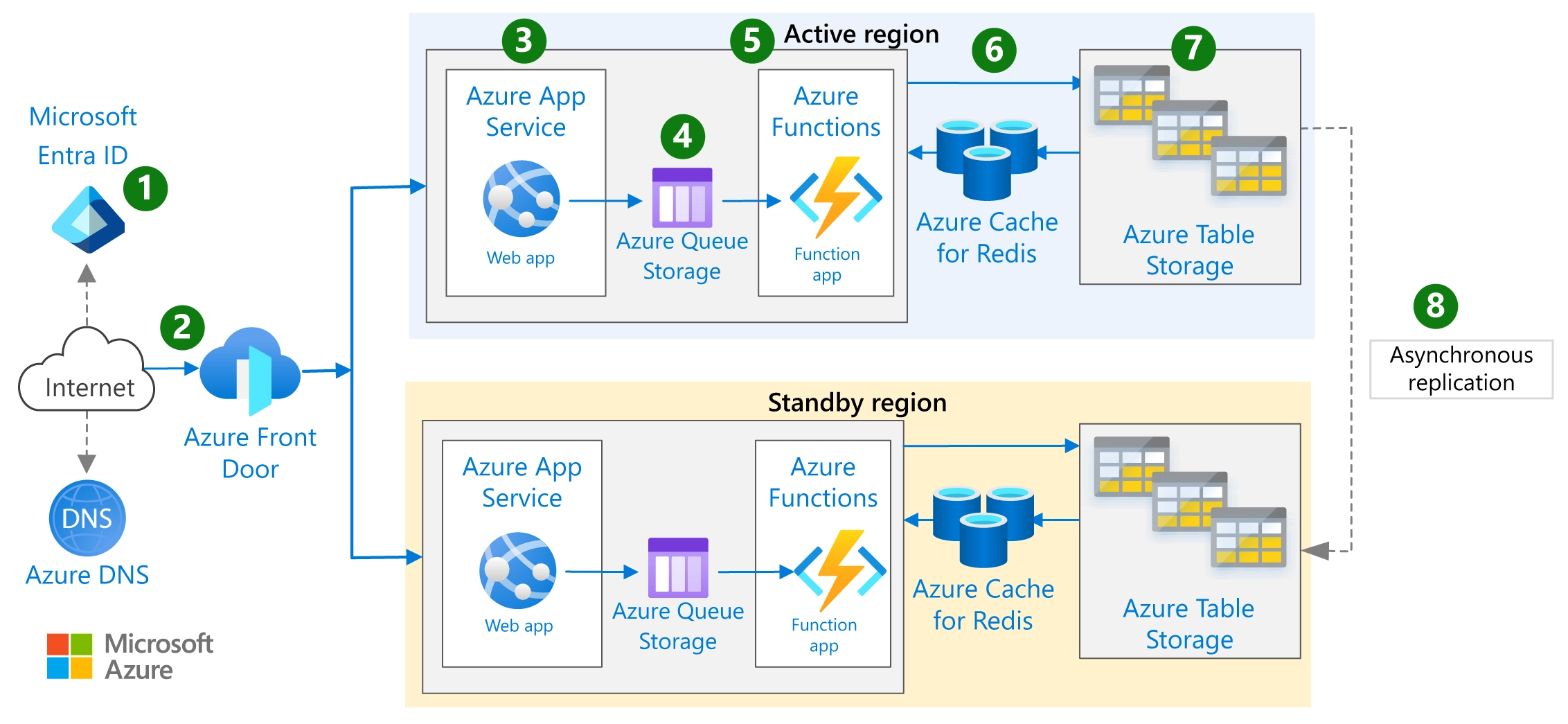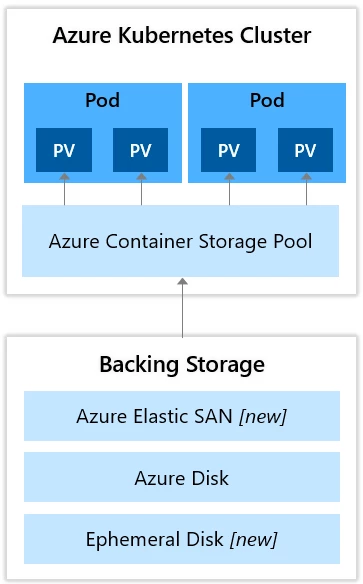A Comprehensive Guide to Azure Storage Types and Their Use Cases

1. Azure Blob Storage
Introduction to Azure Blob Storage
Azure Blob Storage is designed for storing large amounts of unstructured data, such as text or binary data. It is highly scalable and cost-effective, making it ideal for a wide range of applications.
However, keep in mind that Azure Blob Storage is designed in a structure with three levels:
- Storage Account Level
- A Container Level (resides in the Storage Account)
- A Blob (inside the Container)

Figure: Azure Blob Storage Structure, Image courtesy of Microsoft Azure

Figure: Archive on-premises data to the cloud using Azure Blob, Image courtesy of Microsoft Azure

Figure: Use Azure Front Door with Azure Storage blobs, Image courtesy of Microsoft Azure
Common Applications of Azure Blob Storage
- Backup and Archiving: Store backups and archives of applications and virtual machines.
- Big Data Analytics: Integrate with Azure Data Lake Storage Gen2 for big data analytics.
- Content Delivery: Host and stream multimedia files like images, audio, and video.
- Log Storage: Store log files and telemetry data for monitoring and analysis.
What functionalities can Azure Blob Storage perform?
- Scalability: Handle massive amounts of data with ease.
- Integration: Seamlessly integrate with other Azure services like Azure Machine Learning and Azure CDN.
- Access: Access data via REST API, Azure portal, Azure Storage Explorer, and Azure PowerShell.
2. Azure Files
Introduction to Azure Files
Azure Files provides fully managed file shares in the cloud that can be accessed via the Server Message Block (SMB) protocol. It is perfect for scenarios where you need shared storage accessible from multiple locations.

Figure: Hybrid File Services with Azure Files, Image courtesy of Microsoft Azure
Common Applications of Azure Files
- File Sharing: Enable collaboration across geographically dispersed teams.
- Lift-and-Shift: Migrate on-premises applications that use native APIs and SMB to the cloud.
- Backup and Restore: Use as a backup target for on-premises file servers.
What functionalities can Azure Files perform?
- Accessibility: Mount file shares on Windows, macOS, and Linux clients.
- Redundancy: Replicate data across multiple geographic locations for high availability.
- Integration: Easily integrate with Azure Backup and Azure File Sync.
3. Azure Elastic SAN (Storage Area Network)
Introduction to Azure SAN
Azure Elastic SAN is a fully integrated solution that simplifies deploying, scaling, managing, and configuring a Storage Area Network (SAN) in Azure. It provides high-performance, low-latency storage for mission-critical applications.

Figure: Azure Elastic SAN, Image courtesy of Microsoft Azure

Figure: Deploy clustered applications on Azure Elastic SAN, Image courtesy of Microsoft Azure
Common Applications of Azure SAN
- Enterprise Applications: Support high-performance applications like databases and ERP systems.
- Disaster Recovery: Implement robust disaster recovery solutions with low-latency storage.
- Virtualization: Provide storage for virtualized environments and VMs.
What functionalities can Azure SAN perform?
- Performance: Deliver high IOPS and low latency for demanding workloads.
- Scalability: Scale storage capacity and performance independently.
- Management: Simplify management with integrated tools and automation.
4. Azure Queue Storage
Introduction to Azure Queue Storage
Azure Queue Storage is a messaging service that enables reliable communication between application components. It is designed for scenarios where you need to decouple and scale different parts of your application.

Figure: Azure Queue Storage Concepts, Image courtesy of Microsoft Azure

Figure: The role of Azure Queue Storage in Web-Queue-Worker Architecture, Image courtesy of Microsoft Azure
Common Applications of Azure Queue Storage
- Task Scheduling: Queue tasks for asynchronous processing.
- Load Leveling: Smooth out intermittent heavy workloads by queuing requests.
- Decoupling: Decouple application components to improve scalability and resilience.
What functionalities can Azure Queue Storage perform?
- Reliability: Ensure message delivery with built-in redundancy.
- Scalability: Handle large volumes of messages with ease.
- Integration: Integrate with other Azure services like Azure Functions and Azure Logic Apps.
5. Azure Table Storage
Introduction to Azure Table Storage
Azure Table Storage is a NoSQL datastore that provides fast and cost-effective storage for structured data. It is ideal for applications that require flexible data models and high availability.

Figure: Azure Table Storage, Image courtesy of Microsoft Azure

Figure: Two-region web application with Table Storage failover, Image courtesy of Microsoft Azure
Common Applications of Azure Table Storage
- IoT Data: Store telemetry data from IoT devices.
- User Data: Manage user profiles and other structured data.
- Event Logging: Store and query large volumes of event data.
What functionalities can Azure Table Storage perform?
- Scalability: Scale to handle large amounts of data with low latency.
- Cost-Effective: Pay only for the storage you use.
- Flexibility: Use a schemaless design to store diverse data types.
6. Azure Container Storage
Introduction to Azure Container Storage
Azure Container Storage is a volume management, deployment, and orchestration service built natively for containers. It simplifies the storage management for containerized applications.

Figure: Azure Container Storage Pool, Image courtesy of Microsoft Azure
Common Applications of Azure Container Storage
- Container Orchestration: Manage storage for Kubernetes and other container orchestrators.
- Persistent Storage: Provide persistent storage for stateful container applications.
- DevOps: Streamline storage management in CI/CD pipelines.
What functionalities can Azure Container Storage perform?
- Integration: Integrate seamlessly with Azure Kubernetes Service (AKS) and other container services.
- Scalability: Scale storage resources dynamically based on container needs.
- Management: Simplify storage provisioning and management with automated tools.
CONCLUSION
By understanding the different Azure storage types and their use cases, you can make informed decisions that align with your business needs. Whether you need scalable blob storage, reliable file shares, high-performance SAN, or flexible NoSQL storage, Azure has a solution to meet your requirements.






